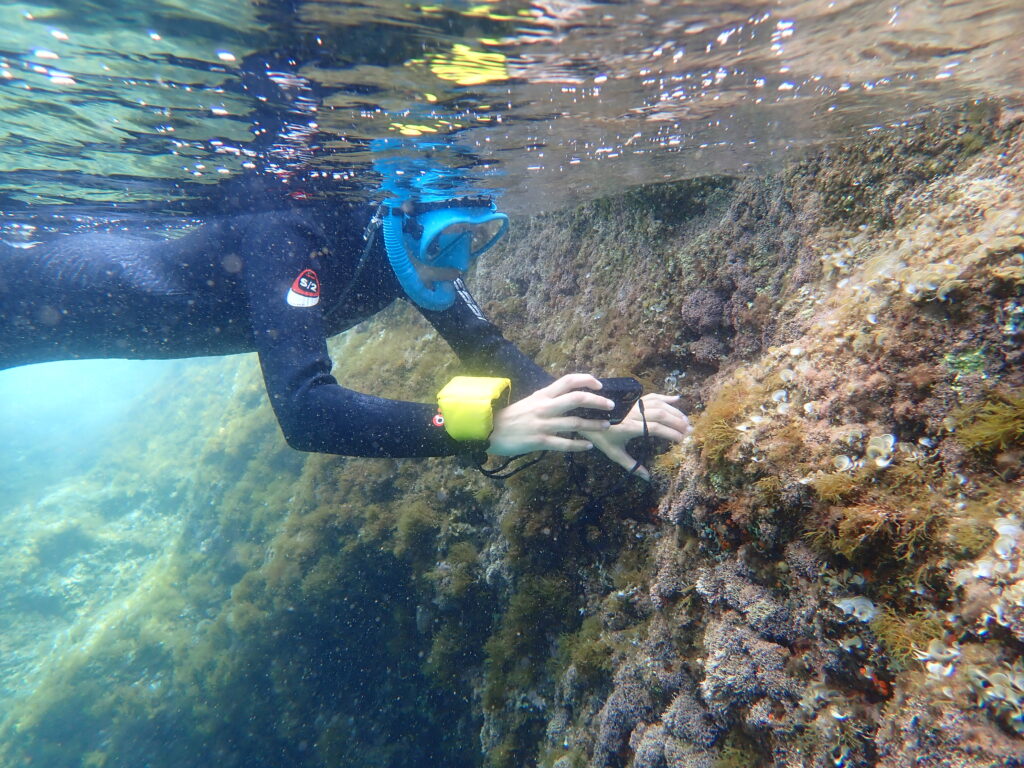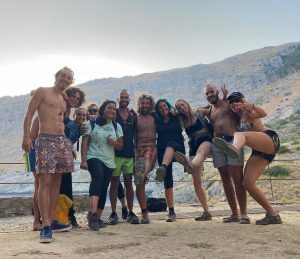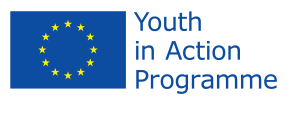Updated on September 1, 2022
Project M.A.R.E. and Sant’Anna Marine Biology Students: Ieranto Bay Algae Project
Ieranto Bay plays as a must-see attraction if you find yourself in Southern Italy, with breathtaking views and a true hub for relaxation. Below what is to be admired from the surface awaits a highly biodiverse ecosystem filled with various forms of algae. Algae play as an essential role in a healthy marine ecosystem by releasing organic compounds through the process of photosynthesis. Algae also has the ability to manage the waste put off by humans, something that is very relevant in today’s marine environment.

A field trip was arranged for students enrolled through Sant’Anna Institute in Sorrento studying marine biology, partnering with the volunteers of Project M.A.R.E to help guide and educate the students participating in the study. Prior to arrival, the students of Sant’Anna had studied several topics regarding algae such as the three main types being green, brown and red as well as the environments in which these species thrive in. Knowledge was developed regarding the properties in which algae hold that classify them as a polyphyletic group of eukaryotic organisms that are phototrophs. As phototrophic organisms, algae have the ability to obtain energy from sunlight to synthesize organic compounds for nutrition.
For the project, each student was partnered with a Project M.A.R.E volunteer who would lead the student to various places within the protected bay where they would collect algae samples for study purposes. With the purpose of education in mind through physical interaction with the algae, the samples were analyzed by recording data than would be later be contributed to the Ieranto Bay database. The volunteers helped with setting up the project by setting up microscopes to analyze microorganisms as well as guiding the students when it came to identifying and sorting the algae in its correct group.

In addition to the activity conducted on algae, the students and volunteers collected samples of Posidonia, a common seagrass found in the Mediterranean. This seagrass holds a very high importance due to its meadows being areas with high biodiversity of animal and plant species. A calculation was completed of the Posidonia photosynthesizing surface by measuring the green tissue, obtaining the photosynthesizing surface for one rhizome. From there the value was multiplied by the density of Posidonia rhizomes in 1 square meter (512). Below you can find the final result of the photosynthesizing calculation’s completed:
| 1 | 2 | 3 | 4 | Average | |
| Photosynthesizing Material (m2) | 6.144 | 6.630 | 6.251 | 7.296 | 6.580 |

The day resulted in a very successful and educational day working together as volunteers and students to gather data on Ieranto Bay’s algae presence through identification and exploration. The volunteers led the students into caves where the presence of red algae was very relevant, on contrary samples of green and brown algae was found on the sides of the bay where sunlight was at constant exposure. While data collection was in action, the volunteers recognized by television reporters sharing their experiences thus far in their work, their daily roles, as well as the various backgrounds they come from. Overall, the day consisted of highlighting the work of the volunteers within Ieranto Bay as well as expanding the knowledge of Sant’Anna students regarding algae, its role in the marine environment and the locations in which the different types thrive.







